|
|
CD, Vidéo, Livres, Instruments,...Silencieusement, setar, kamancheh, tombak | 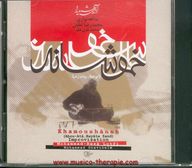 Dernier disque du grand maître Ostad Lotfi et de M. Ghavihelm, cet enregistrement live de setar et de kamancheh est un chef-d'oeuvre de l'art de l'improvisation persane... More... Dernier disque du grand maître Ostad Lotfi et de M. Ghavihelm, cet enregistrement live de setar et de kamancheh est un chef-d'oeuvre de l'art de l'improvisation persane... More... |
| Persian music lessons | 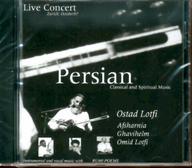 Ce concert live de 1997 est une magnifique retrouvaille entre Ostad Lotfi et M. Afsharnia grand joueur de ney. Ces derniers sont accompagnés au tombak par le talentueux M. Ghavihelm et au setar par Omid Lotfi... More... Ce concert live de 1997 est une magnifique retrouvaille entre Ostad Lotfi et M. Afsharnia grand joueur de ney. Ces derniers sont accompagnés au tombak par le talentueux M. Ghavihelm et au setar par Omid Lotfi... More... |
| Mystery of Love, chant, tar, setar, tombak et daf | 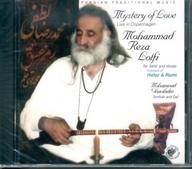 Live improvisation in concert of Ostad Lotfi and Mr. Ghavihelm in mahour modes and dashti. Splendid moments when mix classical music Persian with the repertories soufi and mystic... More... Live improvisation in concert of Ostad Lotfi and Mr. Ghavihelm in mahour modes and dashti. Splendid moments when mix classical music Persian with the repertories soufi and mystic... More... |
| Ostad Kassai, le ney | 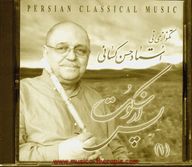 The unequalled reference of the Persan ney (flute in reed), Osatd Kassai offers to us his magic breath in its 80 years... More... The unequalled reference of the Persan ney (flute in reed), Osatd Kassai offers to us his magic breath in its 80 years... More... |
| Vidéo du Concert de Köln | 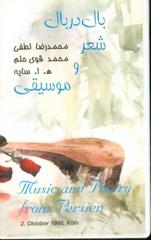 Improvisations aux tar, setar, tombak et chant sur les récitations du grand poète contemporain Sayeh... More... Improvisations aux tar, setar, tombak et chant sur les récitations du grand poète contemporain Sayeh... More... |
| Livre: Ketabe sale Shayda |  Périodique consacré à la musique savante persane et du monde (publications SHAYDA): Périodique consacré à la musique savante persane et du monde (publications SHAYDA):
les articles... More... |
| percussion persane, Tombak | 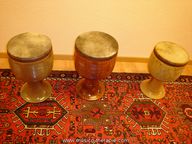 The TOMBAK, drum-chalice with the case out of wooden (to drown, mulberry tree, mahogany tree)creusé in the mass and with single skin, played with the two hands according to an extremely elaborate digital technique, became familiar with the musicians and European music lover. This instrument is considered by the specialists one in the most complex Eastern percussion, as well as counted Indian... More... The TOMBAK, drum-chalice with the case out of wooden (to drown, mulberry tree, mahogany tree)creusé in the mass and with single skin, played with the two hands according to an extremely elaborate digital technique, became familiar with the musicians and European music lover. This instrument is considered by the specialists one in the most complex Eastern percussion, as well as counted Indian... More... |
| Tar | 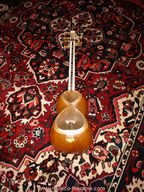 TAR: the tar was the preferred instrument of the majority of the large Masters of the Iranian erudite music, of which a whole flowering opened out particularly with the nineteenth century but does not remain about it less very in favour nowadays. The tar belongs to the family of the fights. Its case of resonance to double bulge is out of wood of mulberry tree and its form evokes two hearts joined... More... TAR: the tar was the preferred instrument of the majority of the large Masters of the Iranian erudite music, of which a whole flowering opened out particularly with the nineteenth century but does not remain about it less very in favour nowadays. The tar belongs to the family of the fights. Its case of resonance to double bulge is out of wood of mulberry tree and its form evokes two hearts joined... More... |
| Santour | 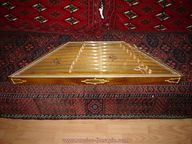 SANTOUR: it seems that the origin of the santour goes up with Babylonian, Assyrian and with the Persians. It acts of a sitar vital trapezoid or 72 metal cords are tended on two lines of nine small rests. The normal extent is of three octaves. The instrumentalist strikes the cords with fine rods of drowning whose end is cut out so as to allow gripping by the first three fingers of each hand, and... More... SANTOUR: it seems that the origin of the santour goes up with Babylonian, Assyrian and with the Persians. It acts of a sitar vital trapezoid or 72 metal cords are tended on two lines of nine small rests. The normal extent is of three octaves. The instrumentalist strikes the cords with fine rods of drowning whose end is cut out so as to allow gripping by the first three fingers of each hand, and... More... |
| Daf, percussion soufie |  Le daf est l'instrument sacré des mystiques orientaux. Le daf est l'instrument sacré des mystiques orientaux.
Par sa résonance et son jeux circulaire, il relie l'homme à la danse de l'Univers... More... |
| Le Setar |  The setar drift of the one of the most former families of lutte(tanbour), which one finds ancestors in pre-Islamic Iran. This instrument is besides at the origin of the Indian sitar. One plays it while passing the cords with the nail of the right index, effleurant in the same movement the open strings to obtain an effect of pedal. By its sonority confidential and refined, it is the preferred... More... The setar drift of the one of the most former families of lutte(tanbour), which one finds ancestors in pre-Islamic Iran. This instrument is besides at the origin of the Indian sitar. One plays it while passing the cords with the nail of the right index, effleurant in the same movement the open strings to obtain an effect of pedal. By its sonority confidential and refined, it is the preferred... More... |
| Cajon | 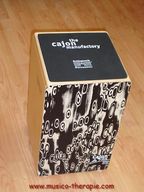 Instrument invented by the slaves E private Tziganes their traditional percussions. The cajón was doubtless at its beginnings of the cases intended for the gathering of the fruits or the cases for fish, the slaves not having access to another thing only the domestic materials. The current cajón generally has an element moreover, the stamp, which returns the its close relation of that of a battery... More... Instrument invented by the slaves E private Tziganes their traditional percussions. The cajón was doubtless at its beginnings of the cases intended for the gathering of the fruits or the cases for fish, the slaves not having access to another thing only the domestic materials. The current cajón generally has an element moreover, the stamp, which returns the its close relation of that of a battery... More... |
|
|
| Copyright 2008. Shermin Movaffaghi,psychologue-musicotherapeute FAPSE ASMT | last update: Wednesday, April 05, 2017 |
|
|
|